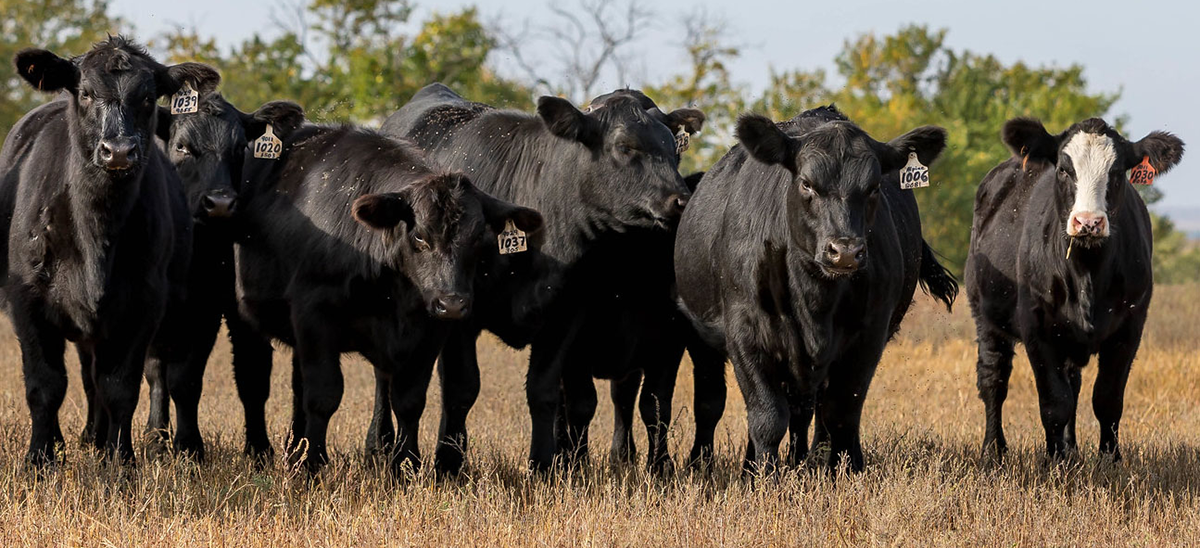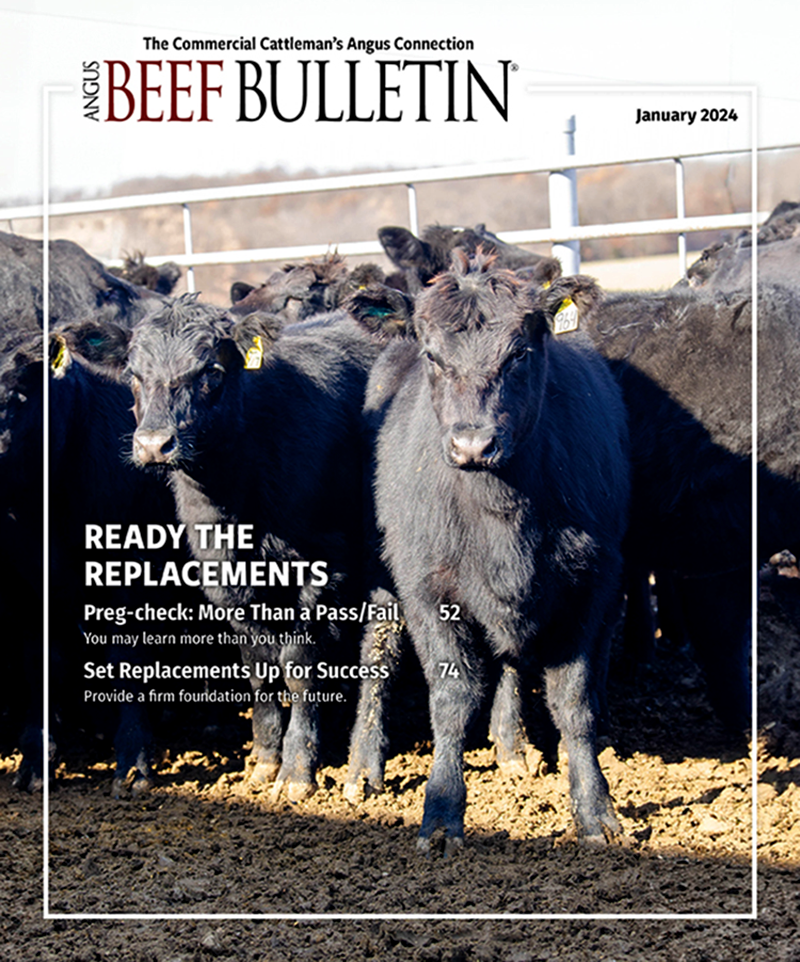
Adding Purchased Bred Heifers to the Herd
Select heifers that are likely to calve early, say K-State cattle experts.
As families and friends gather around the holiday table, sometimes they part ways taking home more than leftovers. They also bring home germs that lead to sickness.
In much the same way, sickness can spread when cattle originating from different operations commingle too soon, say Kansas State University (K-State) beef cattle experts on a recent Cattle Chat podcast.
“Whenever a new animal is added to the herd, even if it is coming from a reputable operation, it is important to isolate them from the rest of the herd for at least a couple of weeks,” says K-State veterinarian Brian Lubbers, adding that isolating means no nose-to-nose contact with other animals in the herd.
This isolation period also allows the new herd additions to get comfortable in their surroundings and learn where feed and water are located, he adds. “It is important to get them acclimated to the new location as well as monitor them for disease.”
While these principles apply to all new cattle, the focus of the experts’ discussion is about adding purchased bred heifers to the herd.
To keep the disease risk to a minimum, K-State veterinarian Bob Larson says it is important to learn the seller’s vaccination protocols to see how they align with the purchaser’s herd health plan.
“It is important to make sure bred heifers are well-protected with vaccinations for diseases that can cause abortions,” Larson says. “And sometimes it is worthwhile to vaccinate them one more time as they approach calving to make sure the health protocols fit with the herd they’ve been added to.”
Larson also emphasizes that buyers should pay close attention to the expected calving date of the females they are considering.
“It is important to select bred heifers that are due to calve before the rest of the cow herd starts calving, or at least in the first couple of weeks of the calving season,” Larson says. “If they calve late compared to the cows, they will not fit into the herd long-term, regardless of the other criteria.”
K-State Veterinarian Brad White agrees, adding: “Heifers will have a longer postpartum interval. Calving them early gives them a greater opportunity to breed back and calve at the right time in the next calving season.”
Additionally, it is important to assess the body condition of the bred heifers and manage them accordingly, because their nutritional needs are often different from the cows, said K-State beef cattle nutritionist Phillip Lancaster.
“Bred heifers are at a different growth stage than cows, so in the last trimester of the pregnancy, when the fetus is gaining weight, she should also be adding about half a pound per day to meet her own growth needs,” Lancaster says. “We don’t want her to be thin going into the calving season, so the goal is to maintain her at a body condition score of 6.”
To hear the full discussion, listen to the Cattle Chat podcast online or through your preferred streaming platform.
Editor’s note: Lisa Moser is a communications strategies instructor in the Department of Communications and Agricultural Education at Kansas State University. This article was provided by the K-State Research & Extension news service. [Lead photo courtesy K-State Research and Extension.]



